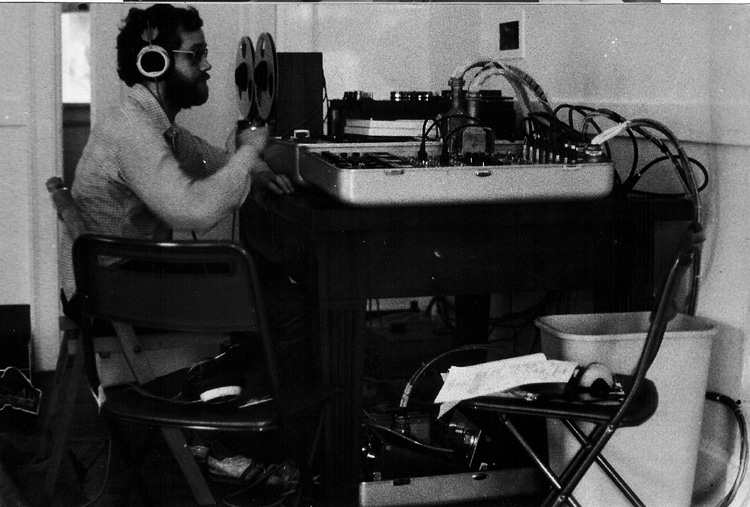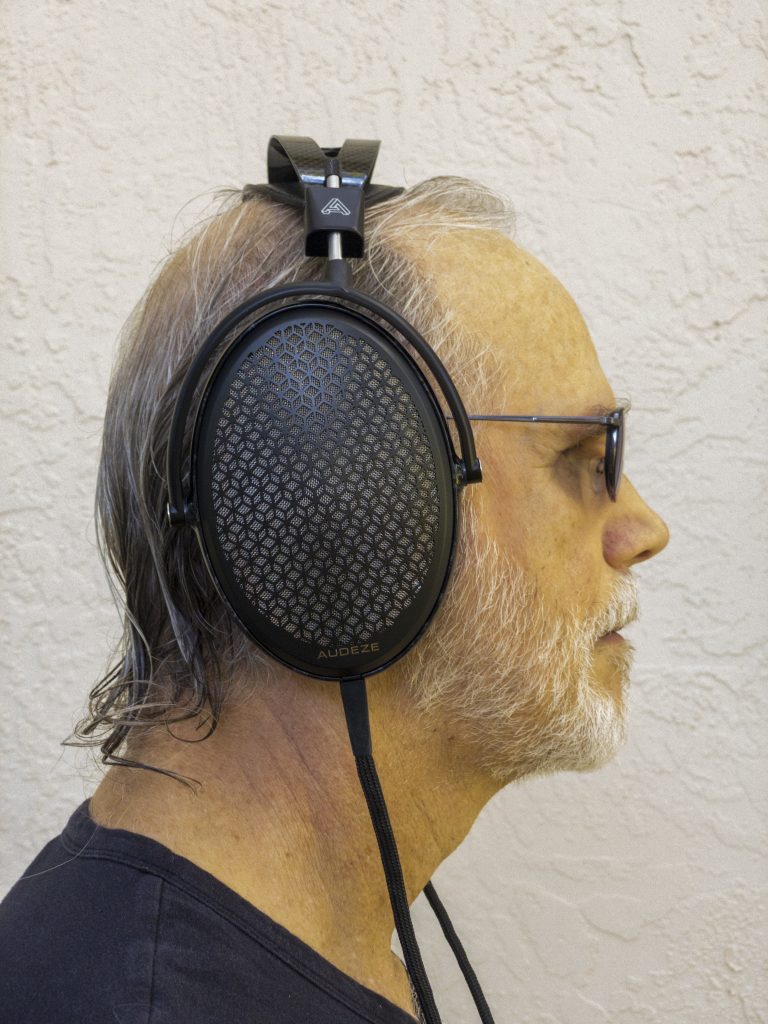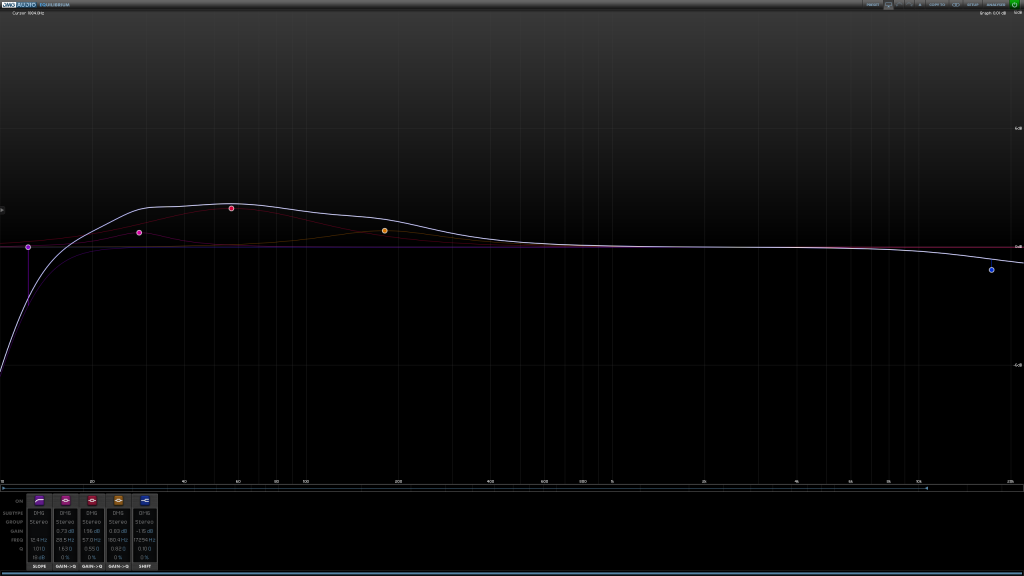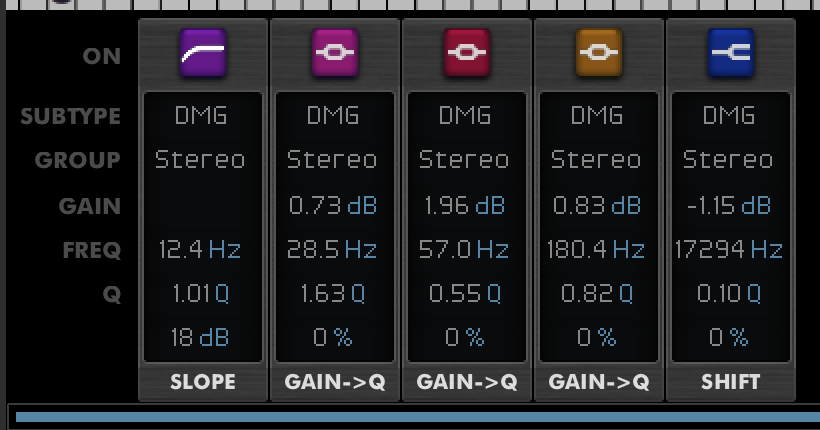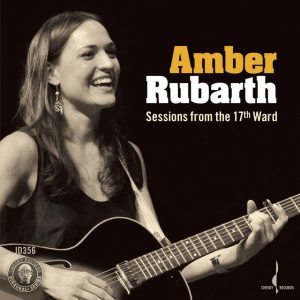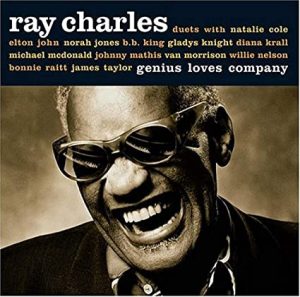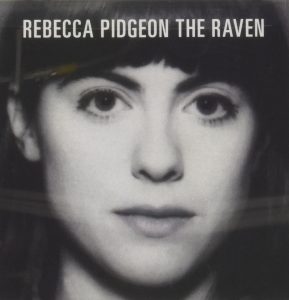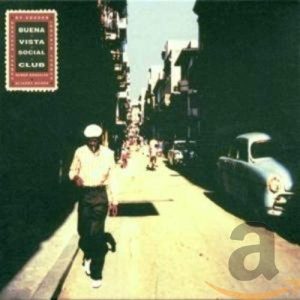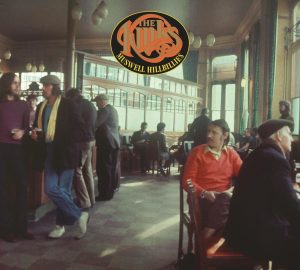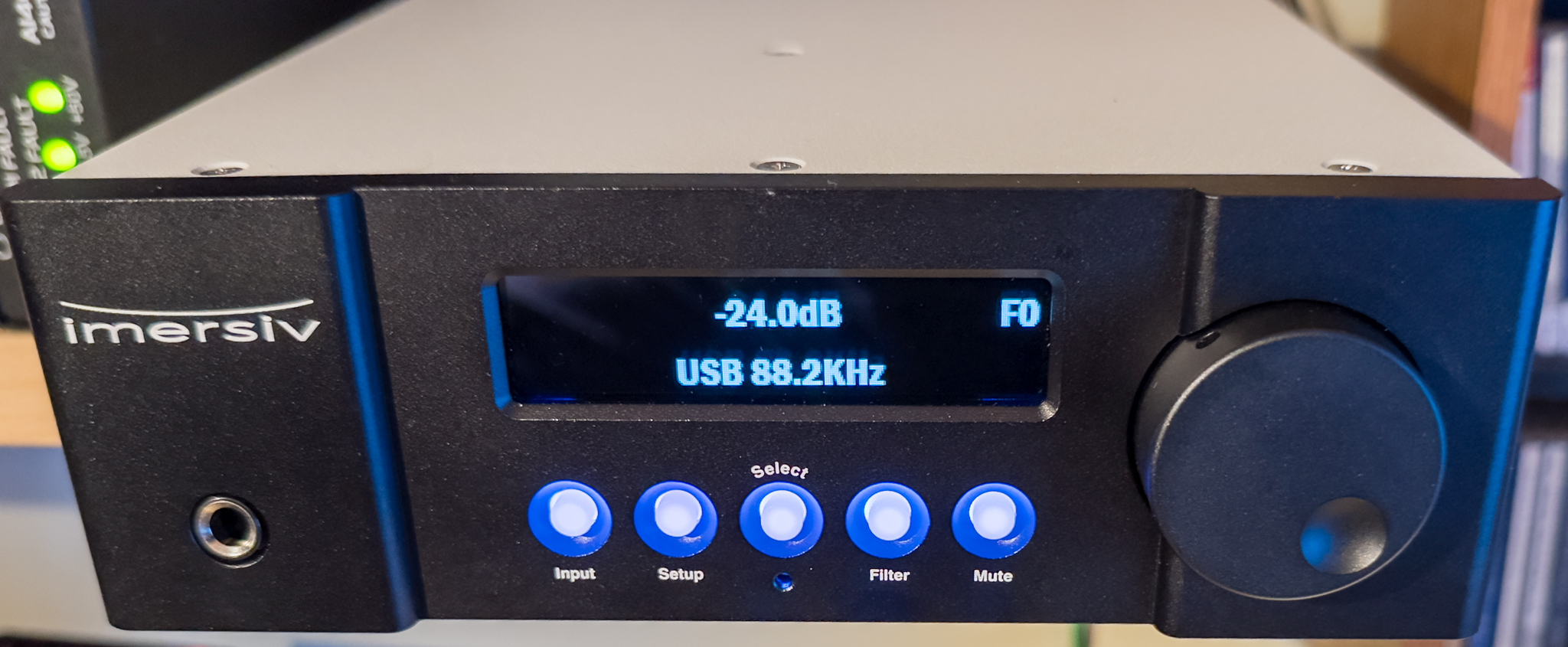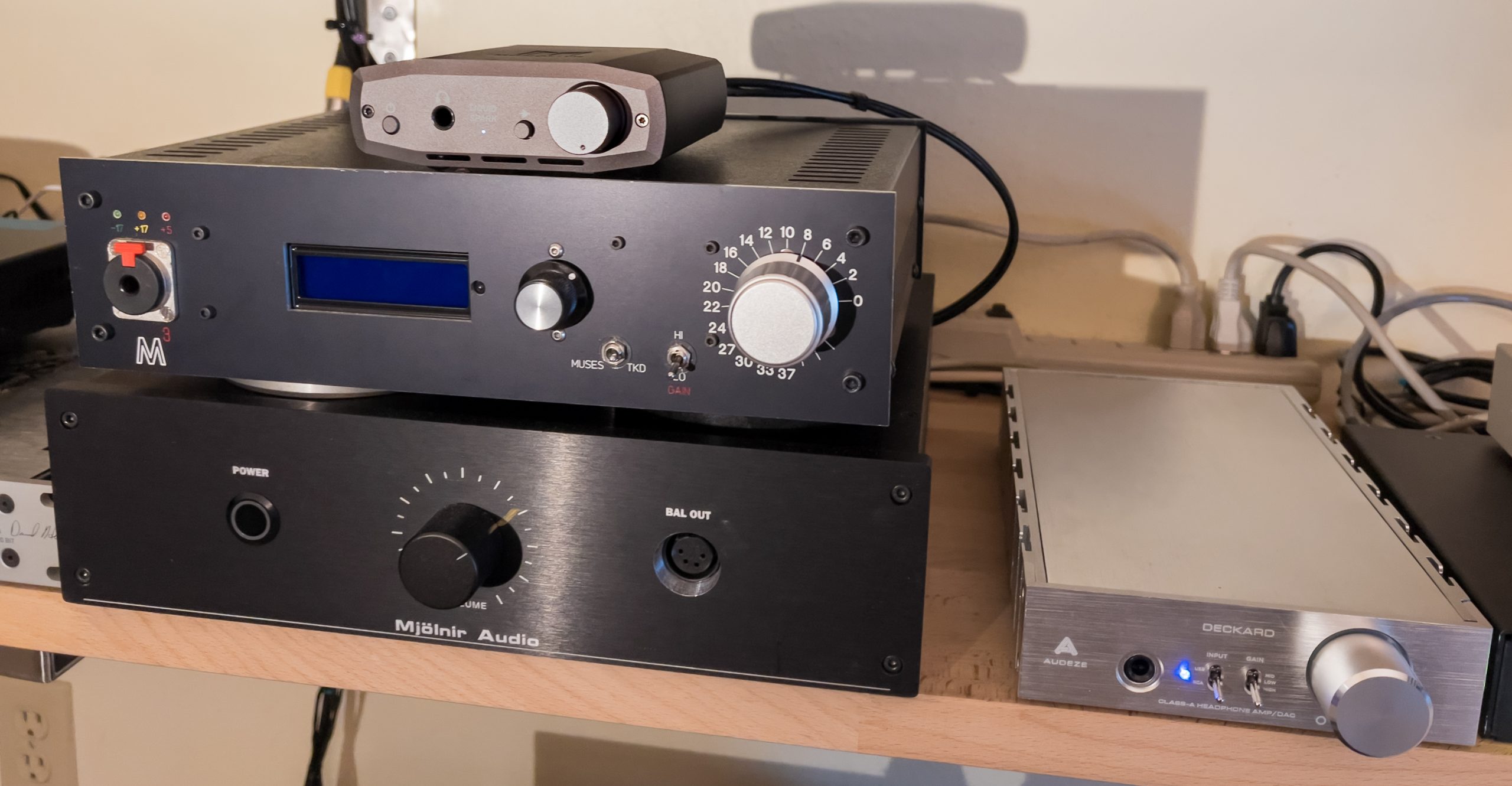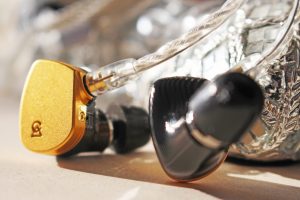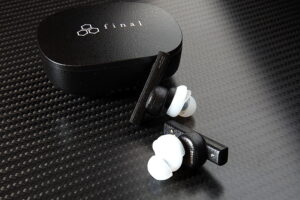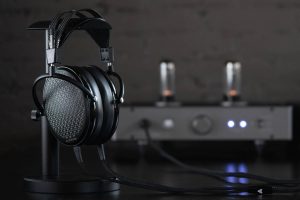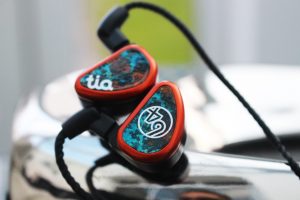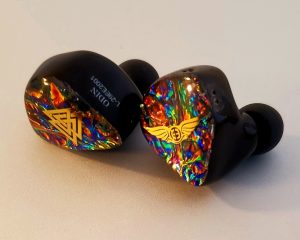It is a particular pleasure to introduce the latest person to join the Positive Feedback creative community. Bob Katz doesn't need much of an intro to audiophiles who follow those who are masters of mastering...and of recording, EQ, and delivering the recorded performances that we all treasure. No recordings, no audio, eh?
His résumé is decades long. Some highlights that he sent to me:
I have been writing audio reviews for years, since the early 1970s! I have written many reviews for professional publications such as dB Magazine, Mix Magazine, Sound on Sound, Resolution, Recording Engineer/Producer, Byte and other publications for audio and computer professionals. Ironically, three of those publications are no longer in print. I've written a best-selling book, called Mastering Audio: The Art and the Science, which has sold many thousands of copies and is in the 6th printing of its third edition! It is currently the most popular audio book written for audio professionals, and is considered the Mastering Engineer's Bible. I'm working on the 4th edition at this moment. It's been translated and published in Spanish, German, and Chinese.
As far as my qualifications go, I have a U.S. Patent on an audio invention which I have licensed to Z Systems, Weiss Audio, Algorithmix and UAD. I've contributed to the success of numerous products and built and manufactured a product which received a Class A Review in Stereophile. I am a Lifetime Fellow of the Audio Engineering Society and one of the 8 committee members who authored the seminal TC-1008 "Loudness Recommendations" document. I give professional seminars throughout the world in three languages. I was Chesky Records chief engineer from 1980 ish through 1996, inaugurated the first Chesky recording and recorded all but one of the Chesky recordings through about 1996 (after which I moved to Florida). I built the world's first 128x oversampling A to D Converter for Chesky and inaugurated the world's first oversampled audio recordings on Compact Disc.
Bob joins us as a Senior Technical Editor, a position that he is extremely well qualified for, quite obviously. You'll see his references to a number of recordings that he's worked on in the first part of his initial article for Positive Feedback. It's quite an impressive list!
Furthermore, Bob is a pleasure to talk to; I look forward to a productive friendship with him.
You, dear reader, will certainly be the beneficiary of Bob's contributions.
Dr. David W. Robinson, Editor-in-Chief
Part One: The Sound
Introduction
Electrostatic Headphone Technology
The most common headphones you will encounter use magnetic force to move their diaphragms. That includes so-called planar-magnetic and moving coil headphones. The problem is that magnetic force changes non-linearly with distance, which introduces some distortion. Manufacturers have sought ways to reduce the distortion mechanisms, but still, magnetic distortion is orders of magnitude higher than that of the other transducer technology, known as Electrostatic.
Electrostatic headphones have a number of technological advantages over magnetic-based designs: Acoustically-transparent stators replace the bulky and heavy magnets required with planar-magnetics. These magnets get in the way of the acoustic field. In planar-magnetic models, Audeze improves this situation by using fazors, which help to shape the acoustic field. But, like the catalytic converter in a car, the fazor is not a cure: it's a Band-Aid for an endemic issue. If properly implemented, electrostatic designs are a cure for acoustic issues, delivering a nearly perfect acoustic transfer from the headphone diaphragm to the listener's ears with nothing seriously obstructive in the way. Stators are far more precise than magnets: they can yield exactly the same amount of attraction (force) on both sides of the diaphragm, irrespective of where the diaphragm is located at any moment between the stators. This produces a linear response that does not change with gain and has vanishingly low distortion.
Audeze CRBN - Stats on Steroids
In the fall of 2021, Audeze—known for their planar-magnetic headphones—surprised the world by introducing an electrostatic headphone, a technology they had been secretly working on for four years. But this is not a typical stat: this one does not use a metalized diaphragm. Instead, the diaphragm is made of a new thin and light polymer film with suspended carbon nanotubes; hence its name "Audeze CRBN." All other stat diaphragms are constructed by coating a thin metallic substrate onto a plastic (mylar or polyester) film. Audeze CRBN avoids the issues of coating metal onto plastic, which can produce an uneven surface which could yield irregular frequency response and harmonic distortion. Instead of having a metallic surface coated on just one side of the diaphragm, the Audeze CRBN diaphragm is conductive throughout, on the outside and inside, thus the entire diaphragm is uniformly attracted to the stators. All points move in concert, reducing distortion.
The Audeze CRBN diaphragm is very light and its special edge damping reduces resonances. The large oval enclosure reduces acoustic modes; width and height of the frame are in a "golden ratio." I'm a big fan of large diaphragm headphones, which can produce a large and pleasant soundstage. These and numerous other factors add up to a potentially clearer, cleaner, more transparent sound with (I think) better transient response than any other current headphone.
The Audeze CRBN has another virtue that inspired the company's entire development project: Electrostatic technology can be used inside an MRI machine to communicate with and entertain the hospital patients. Magnetic-based headphones cannot be used inside the MRI, because ferrous metal (magnets) would interfere with the extremely powerful magnetic field that's used for diagnosis and distort the diagnostic image. So, up to now, patients had to live with the terrible fidelity and poor intelligibility of classic airplane-style headphones, that used an air tube to conduct sound through to the ears. So Audeze CRBN is not only a major development in the audiophile world, the technology also serves a human benefit: to improve the in-patient experience in hospitals.
Audeze's goal was to design an electrostatic headphone that is efficient, with imaging, clarity, resolution and transparency that are best-in-class, using both conventional and all-new technology. Let's see if they have succeeded.
Bob's Stat History
Here's a bit of my own history in the electrostatic headphone world. I purchased my first stat in 1971, a Stax SR-3, which used their consumer bias voltage. Here's a photo taken in 1974, recording the Berkshire String Quartet, monitoring with Stax SR-3 (Fig 1A). I'm using my custom suitcase console with extremely quiet mike preamps. I only use two to four mikes for piano quintets, but I carried this large console because it was state-of-the-art.
Fig 1A: Bob in 1974, recording the Berkshire String Quartet, monitoring on Stax SR-3
Several years later, I moved up to a Stax Pro model that uses a much higher (580 volt) bias, resulting in greatly increased sensitivity and thus cleaner output since less amplifier voltage was required to drive the phone to the same SPL. While waiting till I could afford a Pro model, I didn't sit still: I modified my Stax SRA-12S amplifier to do something which Stax would forbid as it could damage the headphone and short it out: I modified the bias voltage to be adjustable up to a much higher voltage than Stax permitted for the consumer phones. My bias adjustment technique was simple: I increased the bias voltage until I felt the hairs on my arm stand on end! Then I backed it down slightly. I typically got another 3dB of level from my Stax amplifier, which was not particularly powerful, so this made a big advantage in sound quality. I continued down the Stax route, buying a third-party KGSS amplifier with Pro voltages, that I have since sold. I now own four Stax headphones, one of which is the fabulous SR-007 MkII. It is driven by a Mjolnir KGSS HV Carbon amplifier, made in Iceland and designed with a collaboration between the Mjolnir company owner, whose nickname is "Spritzer," and Kevin Gilmore (the KG), who has long been known as designing the finest solid state electrostatic amplifiers.
A Revolutionary Development
In September, everything changed: Audeze's Sankar Thiagasamudram visited in person for the first time. He flew in to introduce a complete surprise to me: the introduction of the Audeze CRBN headphone. I have developed a friendly relationship with Audeze's Sankar, Karthick Manivannan, and Dragoslav Colich ("Dr. C") where I review their designs and come up with reference-quality equalizations. I do not receive any monetary compensation, but I have received this headphone in return for the advice I give them during early development and the equalization that I have developed whose settings I give freely to the audio world. It's quite wonderful to be on the ground floor of a revolutionary development. Even though I am enthusiastic about this new headphone, I promise you that I tell it like it is. If I find a flaw, I'll tell you about it. And I'm very picky about sound. My friends already know about my frankness, which is hopefully tailored with a good dose of tact (at least I try).
Audeze CRBN is a beautiful looking headphone, lightweight and luxuriously comfortable. Its oversize oval enclosure is what I would call "super circumaural" since it extends round the ear and downward a bit onto the neck. Karthick revealed, "We kept the pinna interaction to a minimum with a large oval ear cup, the less the interaction the better the soundstage and imaging." I agree, Audeze's achievement has produced the most transparent headphone sound I have ever heard. The large diaphragm produces better bass response. The earpads are so compliant that I get a good seal with or without my glasses. The enclosure completely covers the bottom earlobe and extends down over the top of the neck, which makes a better seal and better bass (Figure 1). I think the extended enclosure transmits some low frequency vibration down to the body, providing a semblance of the loudspeaker experience. All these advantages add up to a superior headphone listening experience.
Fig 1: The Audeze CRBN's extra large enclosure extends down well below the earlobe onto the neck
Listening to Music on the Audeze CRBN
The Audeze CRBN sounds very sweet and inviting, without the fatiguing edge of its stat competitors and more solid bass response than any previous electrostatic headphone I've encountered (I'm only familiar with the Stax models). Due to the physics of stat design, bass is usually its weakest link, but through careful adjustment of diaphragm tension, size, distance of the stators and other factors, Audeze seems to have conquered the bass issue to a great extent. Its bass sounds extended and somewhat satisfying. I use the word "somewhat" because there's no question that phones such as the Audeze LCD-4 have fatter, fuller, more potent and extended bass than the Audeze CRBN or any competing stat, but hold on to your seats, because Bob's EQ changes that game. The Audeze CRBN's mid frequencies are its best asset, sounding very natural, open and transparent. Its transient response is incredible, because of its extra-light diaphragm and lack of interfering obstacles between the diaphragm and your eardrum. The high end is very extended, a little too bright, but without the tizzy peak of the Stax 007 or especially the 009. Many of you will enjoy the sound of the Audeze CRBN without applying any EQ at all: it has a very pleasing, musical quality, warmer than any other stat and some planar magnetics. But frankly, even the best headphones have some anomaly that makes them less than totally satisfying. Some are voiced quite pleasantly, with a tilt in some direction that sounds pretty but ultimately is not accurate. Until the Audeze CRBN came along, I would switch my serious music listening between the Audeze LCD-4 and the Stax SR-007 Mk II. The LCD-4 because of its sweet and full bottom and fairly natural lower midrange, but its upper midrange and top were seriously lacking. The 007 because of its superior transient response and definition in the top end, but its bottom left a lot to be desired, and I mean a lot. Both of those phones are considered by some to be "reference quality," but not in my book. A reference should be a headphone that you can trust and rely on in all the frequency ranges. And until now, I had not found that reference, equalized or not.
Bob's EQ
I can't sit still. I need a reference headphone that's so accurate, so musical, and so pleasing that I never have to try another headphone again. I heard that potential right off the bat with the Audeze CRBN, which is already world-class. So I worked to develop an EQ and I am pleased to tell you that after much development and refinement, Bob's Audeze CRBN EQ makes it an A++ grade: the best-sounding headphone I have heard. Equalized, this is definitely a reference I can trust like the very best monitor speakers in the best mastering rooms. It sounds natural, enjoyable and musical: The high frequency rise in the extreme treble has been subtly tamed, the midrange remains natural and open, and the bass feels as defined, extended and nearly as powerful as my reference speakers (without the visceral impact of the subwoofers on the feet and the chest). The sonic quality of electrostatic bass reproduction has to be heard to be believed. With orders of magnitude lower distortion than magnetic technology, stat bass sounds hypnotic, rhythmic and satisfying: every note is clearly defined, making magnetic-based headphone technology sound truly fuzzy in comparison. Professional mixing engineers using these stats will be able to tune into the sound of bass instruments and know exactly what they are doing.
I spent a few weeks refining this EQ. My good friend Aaron Gandia, recording and mixing engineer, producer, musician and loudspeaker designer—helped with the refinement of two critical frequency ranges. Aaron brought in some of his references for his own cross-check. Another friend, Gary Cole film and music composer, audiophile and headphone expert, helped refine the subsonic range. This EQ has gone through nine drafts (revisions). The definitive is version eight. To arrive at the ultimate EQ I use a collection of reference recordings that I know extremely well, many of which I have personally recorded, mixed, and/or mastered myself. For my own recordings, I know how the performers and the recording sounded at the recording session. Some of these recordings have been my references for well over 20 years. I know how all my references sound on the exceptional mastering loudspeaker system in my treated control room, where I have produced thousands of masters approved by the artists and producers. The reference mastering speakers are equalized using software from Audio Vero called Acourate using Acourate's psychoacoustic windowing. They are phase and impulse corrected, with greatly-reduced group delay and a single pulse step response that you normally see only in planar loudspeakers like the Quad ESL. They measure linear with maximum +/- 1dB variation for most of the range, and above 1kHz I have implemented an HF roll-off that I have precisely adjusted so that the high frequency response of the speakers falls right in the middle of all the reference recordings. It's a very exciting and enjoyable loudspeaker listening experience. One criterion of a reference recording is that someone should not need to grab a tone control. For example, Anita Baker's album "Rapture," recorded in 1986, available at 24/96 from HD Tracks, is a fabulous album with great sound and a great performance, but I cannot call it one of my official references, because it sounds too bright to me and I need a tone control to tame its high frequencies. Now you know my criteria for the equalized Audeze CRBN: When listening to any recording in your own collection, if you think you hear a problem, you'll be able to know it's the recording and not the phones. That's the embodiment of a reference headphone.
Here's an image of the DMG Equilibrium equalizer settings for Bob's Audeze CRBN EQ (Fig. 7 and Fig 7A). I'm using IIR (minimum phase) filters. As you can see, the general shape is a bass and lower midrange rise with a gentle cut in the extreme treble. It uses just four gentle bands, plus a high pass filter to prevent the drivers from extreme excursion at subsonic frequencies. It's an absolutely inaudible subsonic filter: I have not found any material where this high pass filter is audible, so it's just there for protection, considering direct-coupled amplifiers and that these headphones have response almost to DC. Notice that the bass boost is at most about 2dB. I and my colleagues think no more boost is needed as it sounds full, accurate, punchy and satisfying on all the reference material.
Fig. 7: Bob's Audeze CRBN EQ, implemented in the DMG Equilibrium Plugin
Fig. 7A: Bob's Audeze CRBN EQ settings in the DMG Equilibrium Plugin
Audeze has approved this EQ with enthusiasm, so it is going into the Daniel Weiss 50X series of consumer processors. Depending on your ears and the music you play, feel free to tweak around this EQ as a basis for your personal preference or as a simple EQ to compensate for varying program material. I know that many audiophiles shun equalization, and there's good reason, as a lot of equalizers veil the sound even when you patch them in set to flat. But Weiss digital EQ is high resolution and properly dithered. If you implement my EQ using the DMG plugin and dither it to 24-bits in your music player, it should sound entirely transparent.
I and my colleagues are very happy with Bob's EQ: It does not need any further "correction" to conform with any published curve. Check out the incredible musical references in my review and see if you agree. And there is always music that sounds way off base without EQ: For that there are the Weiss tone controls.
I've tried (truly) to get the same or similar bass response by equalizing my Stax 007 phones. They simply can't take the boost. They overdrive easily and just fall apart.
Note: Any electrostatic amplifier should be warmed up for at least an hour for its bias to settle in before making any critical evaluations.
Monitor Level Cautions
When I listen critically to music on my mastering room loudspeakers, I generally place fortes at around 80dB, and quadruple fortes (ffff) at around 85dB SPL, C-weighted, slow on the SPL meter. With my speakers at nine foot distance in a room with a sloped ceiling that goes up to 23 feet and 4500 cubic foot volume, this SPL sounds impacting and very natural. Short-term transient peaks may exceed average levels by as much as 20dB. But headphone listening, as we know, is an entirely different listening paradigm than loudspeakers. To begin with, the transducers are inches from our ears instead of nine feet as they are in my large mastering room. This proximity exaggerates the transients and long-term listening could damage the ears.
Consequently, I suggest caution with headphones. Keep your headphone listening at full level down to a maximum of 2-3 hours a day. Take your time, rest, and if you exhibit any listening fatigue, stop immediately. Save your ears.
The Stax Fart!
Initial units of the Stax 007 exhibited a popping noise when users would put them on or take them off, or press on the side of the enclosure, which tightens the seal. After a while, Stax may have tired of complaints, as they started to add a small release vent to this model. But this vent was effectively a leak, and functioned as a tiny port which subtly changed the quality of the Stax bass response. Tipped by some posts by Birgir of Mjolnir, I disassembled my Stax and filled the rectangular port with some Blu Tack. This subtly tightened the bass response, but it may also have reduced the bass extension, it's hard to say. The Audeze CRBN is also susceptible to the Stax fart, which is totally normal and tells you that you have a good seal. If you hear a slight noise when putting on the phones or changing their position, it's a sign that the seal is good. This noise does not damage the Audeze CRBN in any way, and in fact, if by accident the diaphragm comes in contact with a stator due to extreme sonic or user pressure, it won't damage or short out the phone because there is no metallic coating as in competing stat designs.
Static noises
The capacitive reactance of the Audeze CRBN's carbon nanotube diaphragm is extremely high so it can literally retain a charge for days. On occasion, this static retention can cause some intermittent tic noises to be heard even if it's not plugged in. This is not a serious problem. The cure is simple: unplug the phone and discharge the connector on a sheet of aluminum foil. Ensure the charge has dissipated by wearing the phones during the discharge. When stored in their deluxe case, attach the included static discharge mat to the end of the connector. I've only experienced this problem once in a few weeks of usage.
A Suspended Sonic Hologram
Headphone stereo separation is normally much greater than that of speakers, often unnaturally, depending on the model of phone. That's why crosstalk circuits have been developed, although I've long been able to adapt to the headphone listening model without needing crosstalk compensation. Yet some headphones do the job of stereo more naturally than others and loudspeaker listeners find these models easier to accommodate. One of them is the Audeze CRBN.
The Audeze CRBN's soundstage is incredibly wide and spacious, so palpable that you feel you can touch the musicians. It extends unbroken from beyond one ear to beyond the other, a bit forward of the centerline. I've never encountered a soundstage this tangible in any other headphone. Unlike with some phones, I don't feel that sounds stick to the "speaker," have the "etch-a-sketch" effect or become the "alien invader." Instead, I hear a holographic, dimensional space that does not feel "embedded," more like "airily suspended."
With good binaural or minimalist-miked recordings, each instrument sits in the 3-dimensional space. I feel I can almost grab the suspended image. We're still far from the U-shaped depth "in front of you" that comes from good loudspeakers, but the Audeze CRBNs reach somewhat closer to this desirable dimensionality. I never liked the Stax Lambdas, feeling that they had a comb filtered response, but I admired Stax's attempt to produce an "out of body" listening experience by placing drivers well away from the ears. But the Lambda image sounds a bit vague to me. By contrast, the Audeze CRBN image is very clearly defined, a suspended sonic hologram. I'm not sure why the Audeze CRBN does this so well: perhaps because of the precise interchannel response matching. Perhaps due to the oversize oval earcups. Perhaps because the diaphragm is located a bit farther out from the eardrum than with most headphones. Perhaps by virtue of their extremely linear frequency response. Whatever the reason, Audeze CRBN create a very pleasant soundstage.
Transient Impact
Transients in the CRBN are incredibly defined. Snare drums sound lifelike and snappy, even better than on my phase and impulse-corrected loudspeakers. But snares on bright recordings can get a little too snappy! This superior transient response is a double edged sword, since it makes translation from loudspeakers a bit difficult for engineers trying to produce or evaluate masters using any stat. Dome tweeters are a bit sweeter and less extended than ribbons; ribbon tweeters have superior transient response, much like stats. But, as we know, most recordings are engineered using dome tweeters, so the engineer may have no idea what's up there in the extreme harmonic ranges of brass, piccolo and cymbals. My EQ takes some of this into account, as transient response and high frequency perception are tied together, so I try to emulate the tonality of my Dynaudios that use the exceptional Esotar (TM) dome tweeters.
Listen to the Music
Here are just some of the many musical references I use to evaluate systems. Check out these reference recordings on any playback system: they represent the epitome of the recording art. Many of the following pieces were used as references for the production of Bob's EQ. Adjust your volume control according to what you like. The levels of these recordings are all over the place, as much as 10-12 dB apart. For this review, I used the Audeze CRBN equalized with the Bob Katz curve.
Amber Rubarth, "Hold On" 24/96 from the Chesky Records binaural album Sessions from the 17th Ward available from HD Tracks. Amber is a young, charismatic folk singer who will grab you. On this piece, engineered by my friend Nick Prout, the cello and fiddle sound warm and natural, each in its own holographic space to the left and right of center. The reproduction is so transparent you believe the musicians are right there—I mean right here! Amber is singing right in front of you. Her vocal image is not embedded in your head, it's floating just a bit in front of your nose, not at all overbearing or invasive. Her voice is tonally pure with no artificial presence or high frequency hype. This recording falls right in the tonal center of all my reference recordings.
Switching from folk to powerful rock, Daft Punk's "Give Life Back To Music" from the album Random Access Memories at 24/88 from HD Tracks. This well-known recording, mastered by my friend Bob Ludwig, punches strongly and deeply on the equalized Audeze CRBN. No additional bass boost is needed to get this recording to punch. The sound of this recording is warm and well balanced, unfatiguing and powerful. On the equalized Audeze CRBN, the fundamental of the bass drum drives and powers nearly as well as it does with my JL subwoofers, which is a remarkable achievement. All that's missing is the punch in the chest that the subs provide. But the Audeze CRBN's unique oval ear cups extend down over the neck and transfer vibration to the upper neck, giving a pleasant tactile sensation a bit like being in the mastering room. Maybe it's my imagination, but I swear I feel some of the sensation in my chest.
These are the first stats that we can use for rock without feeling that we are being cheated. Like a good set of loudspeakers, the equalized Audeze CRBN satisfy with a wide range of genres including rock, hip hop and pop music, that you usually don't expect to play on stats. Still, the Audeze CRBN is so revealing that highly distorted, and especially over-bright and over-compressed recordings can sound quite fatiguing on these phones, equalized or not. So keep a pair of spare Beats phones on your shelf.
Ray Charles and Norah Jones' "Here We Go Again" from the album Genius Loves Company, the 10th Anniversary Edition available at 24/96 or 24/192 from HD Tracks. Make sure you get the 10th Anniversary Edition, which has been lovingly mastered. This song is one of the most perfectly played and sung ballads, I've played it a hundred times over. I return to it again and again to enjoy the playing as well as assess vocal tone and instrumental balance. This recording is simply so right that I cannot pick any nits. Precisely and naturally recorded and mixed by the incomparable Al Schmitt, who will be sorely missed, and mastered by Robert Hadley and Doug Sax, who, sadly, has also passed away, and we have also lost the great Ray Charles and Billy Preston. The electric bass is solid and interweaves with the pedals of Billy's spacious stereo Hammond organ. The two vocalists are panned to slightly different positions, which should be immediately obvious on the Audeze CRBN. The vocals should sound both warm and clear, with no artificial edge, but sufficient presence and body. I've spent a lot of time ensuring the equalized Audeze CRBN matches the vocal body range (150 to 300Hz) and the presence range (2500 to 8kHz) as heard on the mastering room loudspeakers. Even without referring to reference loudspeakers, you should have no trouble noticing how amazingly correct the vocals in this reference recording sound. In fact, Bob's EQ is flat from about 300Hz through 10kHz, as I think the Audeze CRBN already performs at "reference level" in that range. 4k through 10k is the range where I have the most contention with the Harman curve, as it makes the vocals in this reference recording sound snarly and incorrect.
David Crosby's "What's Broken" from the album Croz. This is the 24/96 available from HD Tracks. I've analyzed the 16/44 CD version and it is more compressed and not as impacting or dynamic, so I highly recommend you get the 24/96 version. Of course, Crosby needs no musical introduction. The album is a bit more rocky and less folky than you may think of Crosby. The sound is warm and satisfying, probably a bit on the warmer or darker side of my references. The choruses soar into a big image that sounds really spacious and deep on these phones.
Bombay Dub Orchestra's "Egypt By Air" from the album Three Cities mastered by Yours Truly. Bombay Dub consists of two producer/artists from England who travel to India to record wonderful Indian acoustic musicians and then return to London to mix and overdub their synthesizer artistry that weaves in and out of the acoustic recording. Over 75 musicians took part in this very dynamic recording, that includes Indian percussion, string orchestra and vocalizations. The strings are very dimensional and the master is very dynamic. Notice how the synthesized bass instrument has a stereo effect that moves subtly from ear to ear. The bass on this recording goes down to the center of the earth, thanks to the incredible production by Garry Hughes, his partner Andrew Mackay and with a little help from myself. It truly shines on the equalized Audeze CRBN, making it a superb demo of their sub-bass capabilities. Tonally it's very neutral and clear and falls right in the middle of my references. Maybe some day the record company will release my original non-peak-limited high res master, but the 16/44 CD master is also excellent, available on CD or on Qobuz or other streaming services. One day I visited renowned engineer Bruce Swedien and played my master for him on his excellent loudspeakers. He was so impressed by the deep fundamental bass track that he wouldn't let me take the CD home!
Kev Bev's "Radio Slay" from the album Love Lemonade. Pop music mastered by Yours Truly. Bass is clean and driving, a great demo cut for the equalized Audeze CRBN. It's slightly on the brighter side but sounds clean, full and unfatiguing on the Audeze CRBN. Available from Kev Bev Music.
Boyan Rista's "High On Your Love." Pop/dance/electro single available from the streaming services or download. I'm listening to the original 24/96 master, but the 16/44 is quite nice. Mastered by Yours Truly. This is not an explicitly "audiophile cut," but it appeals to anyone with a wide range of music tastes. With soaring vocals, this song is on the brighter side of my references, but remains unfatiguing on the equalized Audeze CRBN. This is a great mix, integrating all the pop elements with strong and driving bass drum and bass. Cymbals sound open, bright and extended without being fatiguing, just as they do on my loudspeakers. Vocal is warm and clear at the same time. Bass is fat and punchy, perfectly balanced in the mix and on the phones and matching the presentation in the mastering room. Although it is a bright master, the bass is so supportive it results in a smile curve that brings you into the music. On the Stax, or the Focal Utopia, this recording would probably sound harsh and bright. On the LCD-4 it would drive, but you would lose some of the soaring effect that an extended high end can give you.
Cat Stevens' "Where Do The Children Play" from the album Tea For the Tillerman, available at 24/96 on HD Tracks, and also in high res from Qobuz. This famous 1970 album, mixed to analog tape, was lovingly transferred to digital. The mix was artfully done and feels dynamic with a wonderful build to a tearful climax. To my ears, on the equalized Audeze CRBN, Cat Stevens' voice has exactly the tonality that I remember, matching the mastering speakers. Sound is warm and sweet with a wonderful acoustic bass whose every note is perfectly defined. A great demo cut to show the excellence of a 50 year old analog tape recording. Tonally, it's on the warm side of neutral, but I feel no need to reach for the tone control using the Audeze CRBN.
Doug Macleod's "Rosa Lee" from the album There's a Time recorded by my friend, maestro Keith Johnson. I'm playing the 24/176 that I purchased from HD tracks. On the equalized Audeze CRBN the depth, ambience and tonality sound perfect. This recording is on the natural or slightly warm side of my references, but I think it sounds perfect without grabbing a tone control, other than Bob's EQ.
Bill Hubbard Orchestra's (Big Band) "Piel Canela" from the album Where Or When. Mastered by me. Glenn Hubbard, the producer and recording engineer, recorded this big band in the old-fashioned way, with minimalist miking and taking advantage of the hall, at 24/88. Then he produced four stems and took that recording down to my studio for the mastering with slight tweaks in the mix. The result is a glorious, warm, spacious, and punchy presentation. The depth is so three-dimensional that with the Audeze CRBN you should be able to tell which row each instrument section is sitting in. The tonality is on the very warm or dark side of my references. Your taste might prefer to turn up the highs a bit, but before leaping to conclusions, keep in mind this was engineered to sound warm and "classic." I just discovered the 24/44 version is what's up on Qobuz, so I hope they will revise that and make the original 24/88 master available. But the 24/44 sounds very good and is worth catching on the Audeze CRBN.
Vienna Philharmonic, cond. Pierre Boulez. Anne Sofie Von Otter, Mezzo Soprano. Mahler, Symphony #3. 24/88, available from HD Tracks. This is one of the finest classical/orchestral recordings and performances I've heard, with hall depth that the Audeze CRBN reproduces very well. Highly recommended demo track. It's one of the most amazingly dynamic classical recordings I've heard, especially knowing that Boulez was 77 years old at the time of this recording. Dynamics range from quadruple piano to quadruple forte, challenging any room, loudspeaker system, headphone monitor amplifier, or headphone. The producers did not try to compromise the dynamics in any way. This is a long work, demanding your full attention: The first movement is 33 minutes long. This recording turned me into a Mahler lover: it's an intricate, melodic, beautiful composition. On the Audeze CRBN, the bottom of the bass drum and timpani are palatable, in both the extra-soft and loud passages.
If this recording has any flaw, it's bright, and in fact some Audeze CRBN users may wish to roll off the highs beyond the Katz EQ. Feel free, although I think that even with just the Katz EQ, the HF is livable. But it would sound fatiguing on a number of models of bright headphones. The brass in the climaxes can get quite bright, and the cymbal crashes quite forward, but keep in mind that since the Audeze CRBN is more extended than any dome tweeter I've encountered, the Audeze CRBN listening experience includes harmonics that even the producer may not have encountered.
Rebecca Pidgeon's "You've Got Me" from the album The Raven. Recorded and mixed by me using minimalist miking in a good room, direct to 2-track, with no overdubs and no dynamics processing. I'm listening to my 25th anniversary 176.4kHz transfer I performed from my original analog master tape. It has wonderful microdynamics with the backbeat percussion particularly exciting, clear and driving. The sound is as big and spacious as I engineered. These are the first stats that I've heard that bring this recording to light. The clean bass of the Audeze CRBN is a revelation on this recording, with none of the fuzziness that comes from magnetic driver distortions. As of this writing, the 25th anniversary version of this recording at 176.4kHz is about to be placed on the HD Tracks and Chesky sites, so look for this version; it is the definitive, most transparent and dynamic version of The Raven. If you cannot play 176.4kHz recordings, I'm sure the 88.2kHz reduction of this version will also sound fine.
Buena Vista Social Club's "Chan Chan." Playing the 24/96 available from HD Tracks. Co-produced by my friend Juan De Marcos Gonzalez and Ry Cooder. This famous recording has incredible depth: The room is part of the sound. It sounds warm, with natural vocals, musically involving and addictive with the best Latin musicians on earth. Everything sounds right on the equalized Audeze CRBN: I do not feel the need to EQ.
Zenith Duo's "Summer Wind" from the album Yona. This is a very personal, intimate duo recording by two female cello virtuosos, one of whom is the singer and composer. Beautifully recorded in a Jerusalem hall at 24/88 by Zvika Hirshler and mastered by me for maximal naturalness, depth, ambience and dynamics. Talia Erdal's vocal is clear and warm, driving the hall ambience, which should naturally surround the musicians. The transients from her percussive hits on the cello body are particularly impressive. The pizzicato, driving the room, sounds very realistic on the phones. I notice that the 24/44 is available on Qobuz. It sounds good, but the 24/88 would be even better. I've contacted the producers and hopefully this will be rectified.
The Kinks' "20th Century Man" from the album Muswell Hillbillies produced to analog tape in 1971. I'm listening to the fabulous 24/96 master from HD tracks, that sounds as fresh as the day it was recorded. The drums rock: It's extremely satisfying. I do not feel the need to switch to my LCD-4s; the equalized Audeze CRBN plays rock exceptionally well, demonstrating that the right stats can be great for rock. Play it loud, it builds to a climax!
San Francisco Symphony's "America" from West Side Story with the sound lovingly produced by my friend Jack Vad. This is a superb reference: highly recommended. What incredible playing and direction by Michael Tilson Thomas! This is the 24/96 that I purchased direct from Blue Coast Records, but it is also available from HD Tracks. The voices sound perfectly natural on the equalized Audeze CRBN, it's a great reference for vocal tonality. The driving percussion, basses and winds work together to create a tight impact; the musicians are obviously having a great and enthusiastic time interpreting Bernstein under Tilson Thomas. This recording should not sound artificially bright if your reproduction is just right. Yes, the extended HF response of the Audeze CRBN brings out the extreme harmonics of the piccolo and brass — yet I think with adequate warmth and with my EQ it never sounds fatiguing. Overly bright headphones like the Stax 009, the Focal Utopia, or the Sennheiser 800 would probably give me a headache with this recording.
In Conclusion
One Headphone to Rule Them All
Clearly, the Audeze CRBN is a revolutionary monitor. With EQ I think it can take on any other rival, whether magnetic or electrostatic, in any frequency range. Electrostatic phones require a heavy, dedicated amplifier, so of course I use more portable headphones for outside or bedroom listening. But in the studio and listening room I now use a single headphone for both pleasure and reference listening: The Audeze CRBN, equalized if possible to Bob's EQ. It is the most transparent, musical and accurate headphone I've ever heard. Bob's EQ is designed to perceptually match the calibrated loudspeakers in the mastering suite, where thousands of masters approved by artists and producers have been made. Thus, you will not only be able to enjoy the music, you can judge recordings like a mastering engineer. No second-guessing the headphone response. I urge you to check out the Audeze CRBN.
CRBN Electrostatic Headphones
Retail: USD $4500
Audeze
CRBN page (including specifications) at Audeze: www.audeze.com/products/crbn
Part Two of Bob's reflections on the Audeze CRBN headphones will appear in the near future. Stay tuned!
Photographs by or submitted by Bob Katz.




